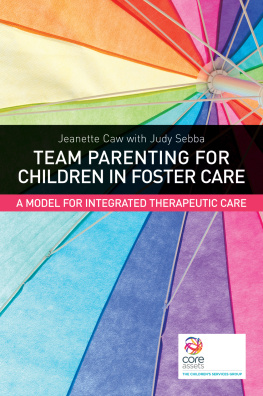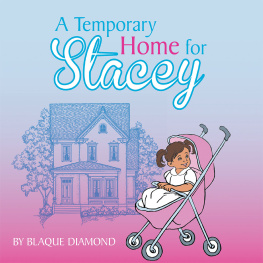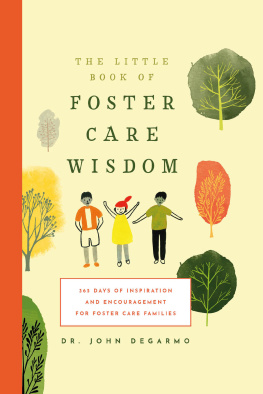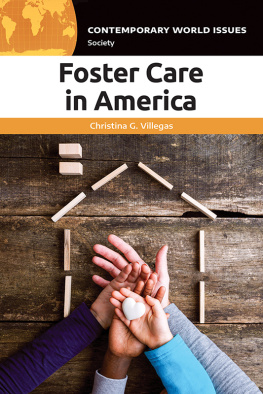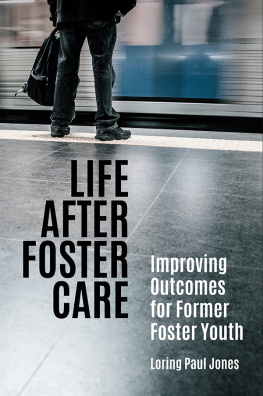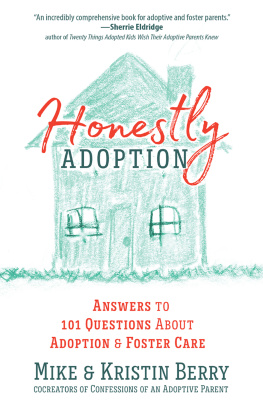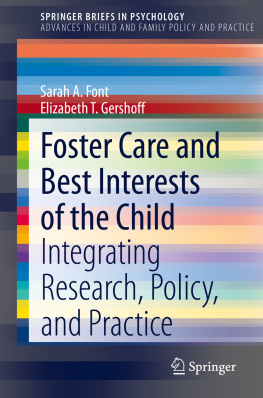Child-Centred Foster Care
A Rights-Based Model for Practice
Annabel Goodyer
Foreword by Sue White
Jessica Kingsley Publishers
London and Philadelphia
Contains public sector information licensed under the Open Government Licence v1.0.
Figure 2.2 from Hart 1992 on p.43 is reproduced by permission of UNICEF Innocenti Research Centre, Florence.
First published in 2011
by Jessica Kingsley Publishers
116 Pentonville Road
London N1 9JB, UK
and
400 Market Street, Suite 400
Philadelphia, PA 19106, USA
www.jkp.com
Copyright Annabel Goodyer 2011
Foreword copyright Sue White 2011
All rights reserved. No part of this publication may be reproduced in any material form (including photocopying or storing it in any medium by electronic means and whether or not transiently or incidentally to some other use of this publication) without the written permission of the copyright owner except in accordance with the provisions of the Copyright, Designs and Patents Act 1988 or under the terms of a licence issued by the Copyright Licensing Agency Ltd, Saffron House, 610 Kirby Street, London EC1N 8TS. Applications for the copyright owners written permission to reproduce any part of this publication should be addressed to the publisher.
Warning: The doing of an unauthorised act in relation to a copyright work may result in both a civil claim for damages and criminal prosecution.
Library of Congress Cataloging in Publication Data
Goodyer, Annabel, 1952-
Child-centred foster care : a rights-based model for practice / Annabel
Goodyer ; foreword by Sue White.
p. cm.
Includes bibliographical references and index.
ISBN 978-1-84905-174-3 (alk. paper)
1. Foster home care--Great Britain. 2. Foster children--Great Britain. I.
Title.
HV887.G5G66 2011
362.7330941--dc23
2011017936
British Library Cataloguing in Publication Data
A CIP catalogue record for this book is available from the British Library
ISBN 978 1 84905 174 3
eISBN 978 0 85700 402 4
Converted to eBook by EasyEPUB
Foreword
Based on thorough, sociologically informed research into childrens stories about being fostered, this book challenges some of the dominant theoretical and conceptual approaches to understanding childrens experiences. By shifting the analytic gaze away from deficit-focused accounts of children as bundles of developmental needs, or as attachment-rich or attachment-poor entities, Annabel Goodyer manages to animate the children who informed this study. Her data flesh out those children and even give voice to those who powerfully describe having no voice. She shows how children, overwhelmed by the process and experience of being moved, act rationally and strategically to avoid situations or exert control over them. Some actions, such as staying away from the home all day, place them at increased risk, but they are purposeful actions nonetheless.
Goodyer reminds us that children who are fostered are social agents. They are not passive objects of state interventions made in their best interests, but seek, like all of us, resources to allow them to exercise their agency. Community, networks and possessions such as mobile phones feature in the childrens accounts of things that helped them when they moved. Slippery concepts like belonging and trust are opened up to reveal complex negotiated settlements that defy prescriptive policy or practice solutions. Children carry different versions of belonging, with some identifying the foster placement as their primary belonging and some affirming that they belonged with their birth family. These settlements must be negotiated in interaction and relationship each time a child moves.
Throughout the book, Goodyer draws contrasts and comparisons with major studies of fostering, which makes this book an excellent review of literature as well as a research-informed text in its own right. Moreover, by addressing matters such as the relationship between the public and the private, childrens experiences of the bureaucratic regulation of fostering, and the impact of technologies such as social networking, this book has plenty to say about practising social work in contemporary society. The accounts in Chapter 7 of childrens frustrations with the regulations and decision-making in childrens services strike a chord with the stories submitted to the recent Munro Review of Child Protection in England, on which I served. One story told to us was of a child who was unable to go on holiday with his foster carers because the authorisation process in the local authority was too labyrinthine and ponderous to cope with real time planning for a family holiday. The child was accommodated in a respite placement instead. One rather chilling comment in this book is that children tended to attribute feeling safe in a foster home to good luck rather than good social work judgement.
However, this is not a sensationalising or nihilistic account of fostering that simply pours out atrocity stories in the name of critique. Many children had wholly enriching experiences of being fostered and most had very clear ideas about what could be done to improve the system. They are unconvinced of the merit of the dominant mechanisms of public accountability, and seem particularly irked that their private sphere is colonised by the public domain through well-intentioned initiatives and practice mantras, such as information sharing. Instead, children recommend that accountability should focus on whether they are in a safe and supportive space, whether there is trust, whether they had a chance to get to know their foster carers before being forced to live with them, whether their social workers visited frequently, especially in the early days following a move, and whether they have a normal family life. It is not surprising that what children want from fostering is not so far from what we all want from our own lives and homes.
In the later chapters of the book, Goodyer advances a model for professional practice in this domain. These chapters, informed as they are by an understanding of children as relating, emoting and competent beings, offer real possibilities for a way forward and for shaking up professional vocabularies about children and fostering where these have become stale.
Sue White
Professor of Social Work (Children and Families), University of Birmingham
Acknowledgements
First and foremost I would like to thank the children and young people who have shared their experiences and thoughts with me so generously, as well as the social workers and participation workers who helped them to do so. Throughout the book, place names, childrens names and some other identifying factors have been altered, but their accounts of being fostered remain unchanged.
Several people have offered considerable support to the writing of this book, in particular my children: Thomas, Katherine and Harriet Goodyer.
Finally, thanks are extended to my editor at JKP, Stephen Jones, and also to my colleague at London South Bank University, Professor Bob Broad, for comments and feedback on an earlier draft of Chapter 10. Any subsequent errors are entirely of my own making.




